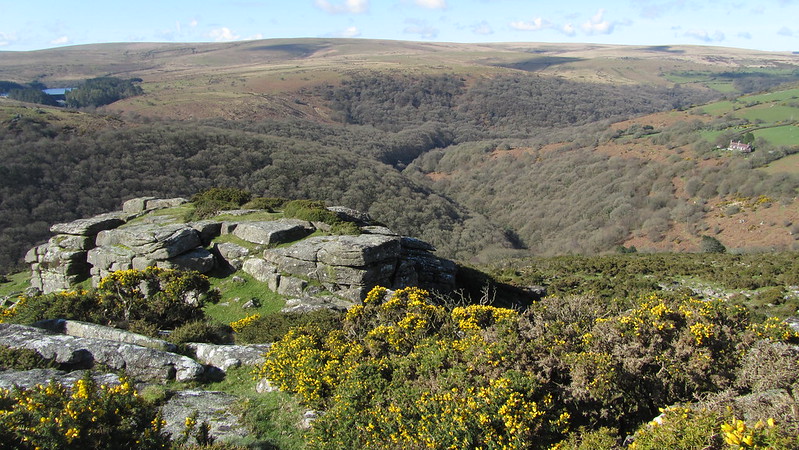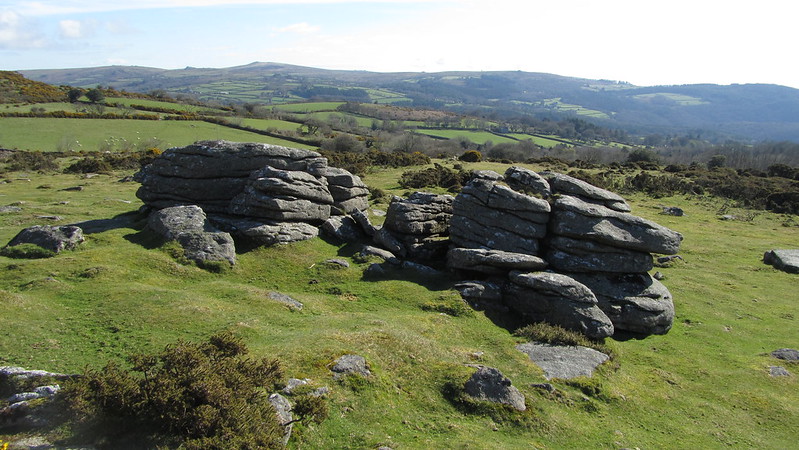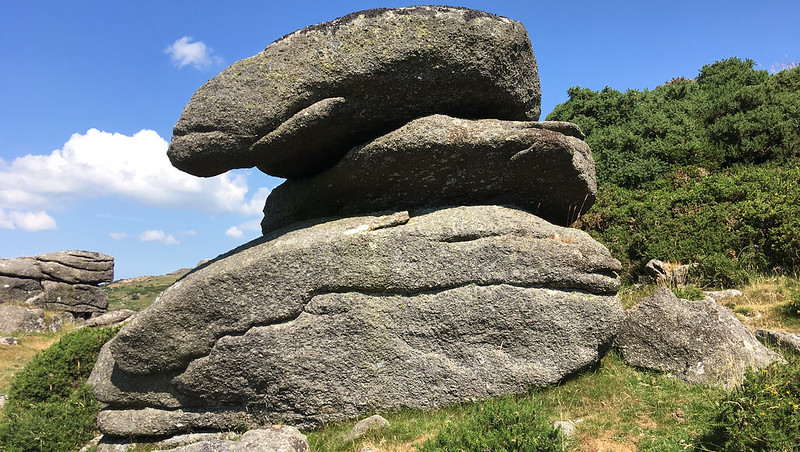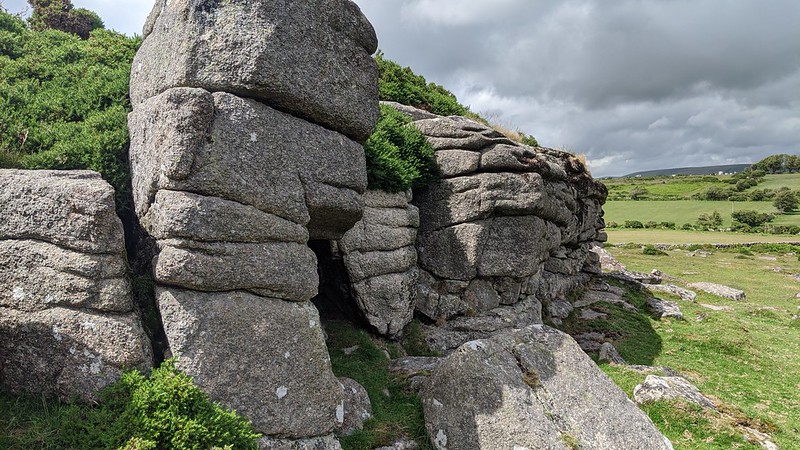TORS OF DARTMOOR
a database of both lesser- & well-known rocks and outcrops
Mel TorMil Tor, Mill Tor, Molletor
 This is an excellent and romantic granite tor with great views of the Dart Valley and Venford Reservoir, with the Bench Tors beyond. As well as boasting good geology, it is very easy to access. This is from the north at Bel Tor car park with only a 5 minute walk to the tor. The summit of Mel Tor is adorned with small, irregular rock basins that occasionally trap rainwater. A fine millstone can also be found on the south side of the tor at SX 69346 72531, its abandonment indicative of stone cutting on the tor in times gone by. The tor spills far into the woodland of the same name below, spreading on the slopes beneath the summit rocks with many sizeable outcrops to the south and west, and there is an outlying stack to be located at SX 69466 72480.  Hemery sets the scene; "East of Simon's Lake is the greatly weathered pile of Mil Tor (1,125 feet) which, like its westerly companion Sharp Tor, stands in a commanding position six hundred feet above the valley floor. The common map version of the name, 'Mel' Tor, is a mistranscription of the accepted vernacular corruption of 'middle', which is 'mil'; just as Mil Tor (E. Ockment) is the middle tor of the three, so is this pile intermediate between Sharp and Bel Tors."  An old tradition is also mentioned by Hemery, described as the 'Rolling of the Wagon Wheels on Midsummer's Day'. He states: "It was revived for a time during the late 1950s, since which it has again lapsed. The aim was that the wheels should reach the river, but so rock-strewn is the six-hundred-foot slope that few ever did. In consequence, the old iron tyres of long-rotted wheels lie about in Miltor Wood - some now encircling seedling trees." This particular custom at Mel Tor was undertaken by the villagers of Leusdon on the eve of St John the Baptist Day June 24th. It is likely that it followed the tradition practiced elsewhere in the UK at the time as revealed by Marie Trevelyan in her 1909 book on the Folklore and Folk Stories of Wales:  Apparently, the custom at Mel Tor was revived yet again in 1962 but now streamers were added to the wheels to give a flame effect. However, it seems without the added spectacle of the danger of fire, it was a short-lived revival and Roy Christian notes in his Old English Customs from 1972: "Within the last few years, the villagers of Leusdon, in Devon, have abandoned their ancient and apparently pointless practice of rolling a cartwheel down the slopes of Mel Tor on the eve of St. John the Baptist's Day. Preservationists may deplore the end of this and other customs, but artificial respiration will not keep them alive. A custom will only survive if a spontaneous desire by a large body of folk to keep it going."
| ||||||||||||||||||||||||||||